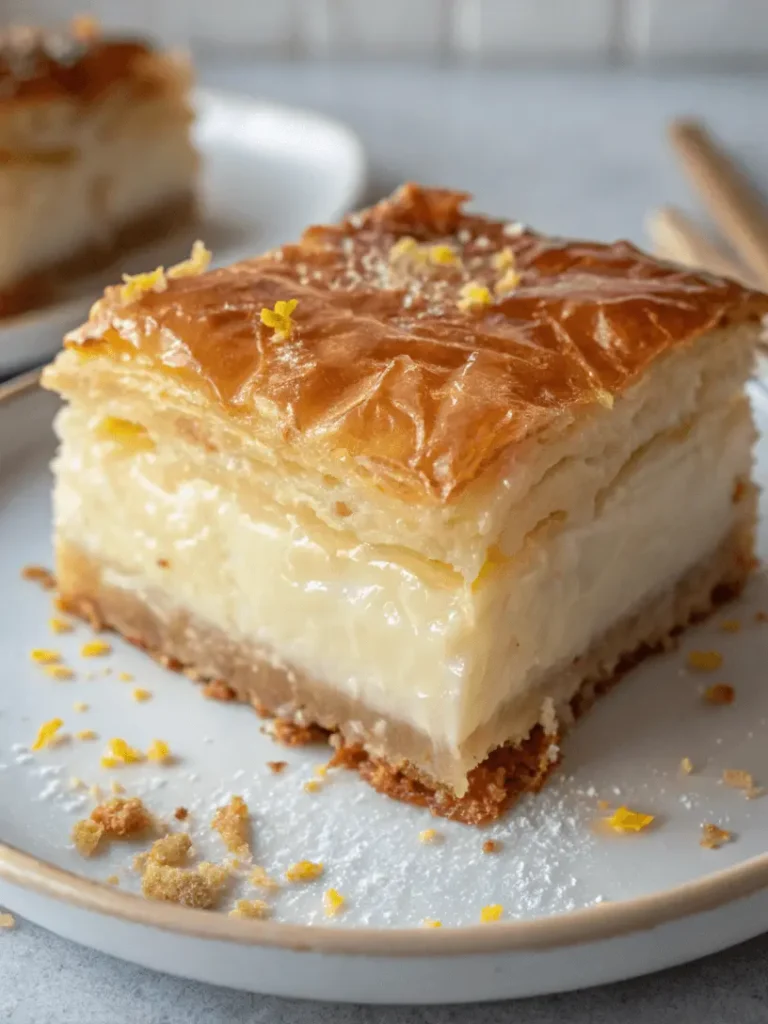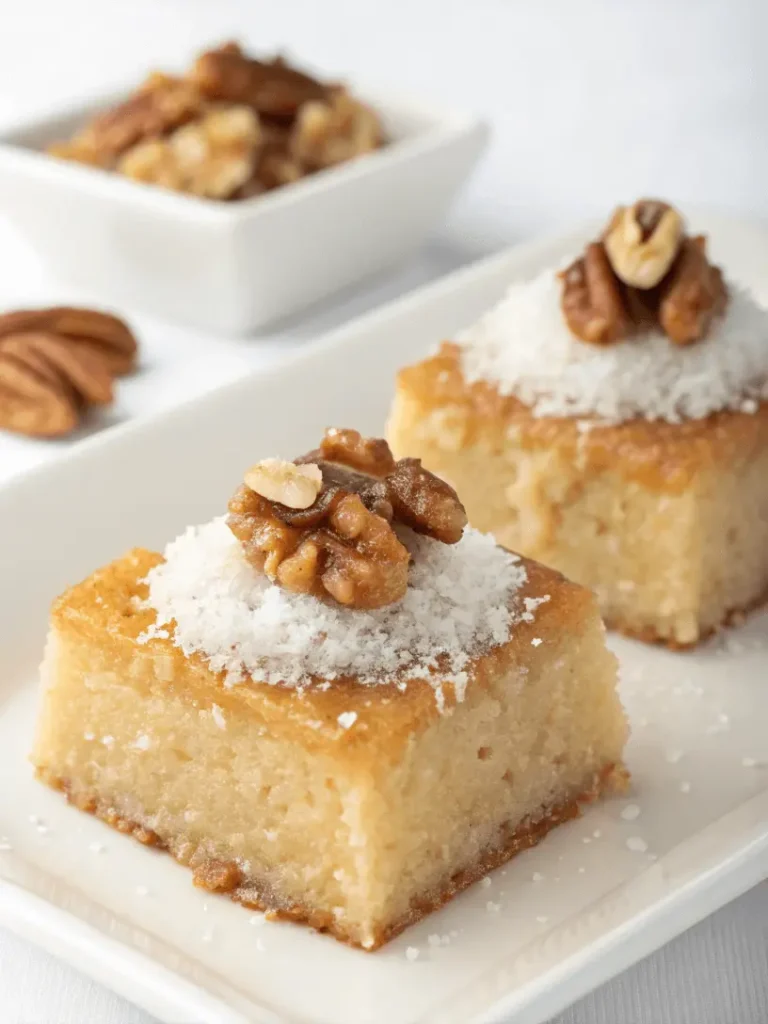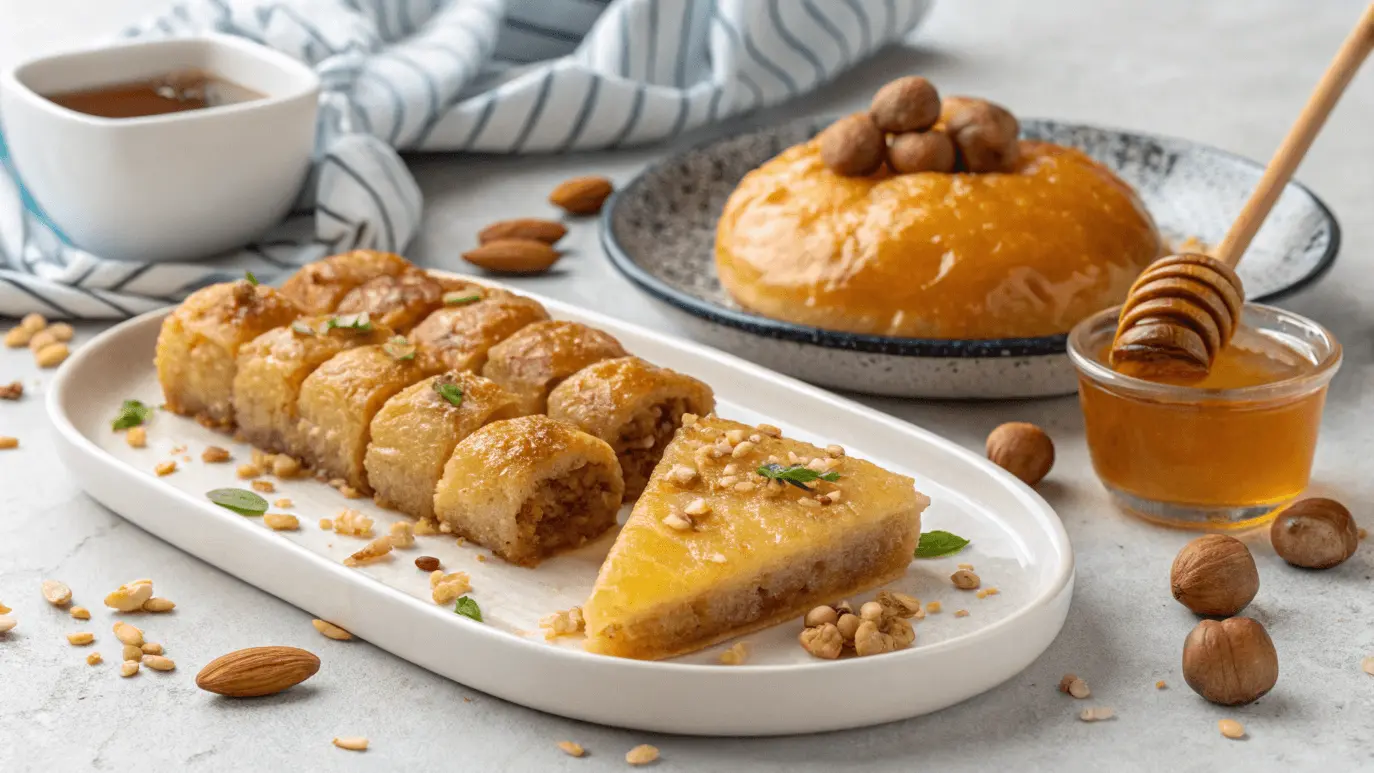As I walked into the bustling bakery, the smell of fresh pastries hit me. It took me straight to the heart of Greece. The display case was full of colors and textures, each Greek Desserts calling out to me.
From the honey-soaked baklava to the creamy galaktoboureko, I knew I had to try them all. These sweets are more than treats. They show Greece’s vibrant culture and rich culinary history.
Greek desserts are a mix of old recipes, local ingredients, and traditional methods. They create a world of flavors. Whether you’re a seasoned traveler or new to Mediterranean food, these desserts will amaze you.
These sweets are a big part of Greek culture, enjoyed during holidays and special moments. Like the charm of a lemon blueberry icebox cake, Greek desserts balance light textures with rich, satisfying notes.
Introduction to Traditional Greek Desserts
Dive into the world of traditional Greek desserts. These sweets are a big part of Greek culture. They’re enjoyed during holidays and special times. They use ingredients like flaky phyllo dough and sweet honey.
Greek desserts are a delightful window into the country’s rich history and culture. For centuries, these sweets have played an important role in Greek life — from everyday family meals to grand holiday celebrations.
If you love rich, crowd-pleasing cakes, you might also enjoy exploring our Texas Sheet Cake recipe, which offers the same indulgent spirit in a totally different style.
The Cultural Significance of Greek Pastries and Desserts
In Greece, desserts are often shared at gatherings, symbolizing warmth and connection. Popular dishes like baklava and galaktoboureko are not only famous Greek desserts but also carry deep cultural meaning, often prepared during holidays, weddings, and religious events.
Even easy Greek desserts, such as simple honey-drenched pastries or semolina cakes, reflect the country’s love for natural, high-quality ingredients. These sweets tell the story of a cuisine rooted in Mediterranean flavors, where every bite has a history.
Common Ingredients in Greek Desserts
| Ingredient | Role in Greek Desserts |
|---|---|
| Greek yogurt | Adds creaminess and a tangy flavor in Greek yogurt dessert recipes and chilled sweets. |
| Honey | Provides natural sweetness; often drizzled over pastries or blended into cakes, making a Greek dessert with honey a classic choice. |
| Nuts (walnuts, almonds) | Give crunch and texture, especially in layered desserts like baklava and syrup-soaked cakes. |
| Phyllo dough | Creates flaky layers used in many Greek pastries and desserts, from baklava to custard pies like galaktoboureko. |
| Semolina | Forms the base of cakes like revani and puddings like halva, adding a unique grainy texture. |
| Citrus and spices | Lemon zest, cinnamon, and cloves add aromatic depth to many traditional recipes. |
For those who enjoy fruity, chilled desserts, our Lemon Blueberry Icebox Cake is a refreshing treat that pairs beautifully with the light, citrus notes often found in Greek sweets.
Easy Greek Desserts You Can Make at Home
Not all Greek desserts require hours in the kitchen — in fact, many are simple enough for beginners! These easy Greek desserts deliver authentic flavors using minimal ingredients and straightforward techniques, making them perfect for home cooks who want to explore Greek sweets without stress.
Quick Recipes for Beginners
Here are some beginner-friendly options you can try today:
- Loukoumades (Greek honey puffs) : Fried dough balls drizzled with honey and sprinkled with cinnamon or nuts.
- Greek yogurt with honey and walnuts : A no-cook treat blending creamy yogurt, golden honey, and crunchy walnuts — one of the easiest Greek yogurt dessert recipes.
- Revani (semolina cake) : A syrup-soaked cake made with semolina flour, perfect for those who want a simple bake with rich flavor.
- Greek rice pudding (rizogalo) : Creamy, lightly sweetened pudding flavored with cinnamon and often topped with a dusting of nutmeg.
- Melomakarona (honey-dipped cookies) : Soft cookies soaked in honey syrup and topped with ground walnuts; they store well and taste even better the next day.
Tips for Simple and Delicious Results
| Tip | Why It Helps |
|---|---|
| Use Greek yogurt in no-bake desserts | Adds creamy texture and boosts flavor in chilled sweets and desserts using Greek yogurt. |
| Don’t skip the syrup step | Many easy Greek desserts, like revani or baklava, rely on a honey or sugar syrup soak to stay moist and flavorful. |
| Choose fresh, high-quality honey | Since honey is a key ingredient in many Greek desserts with honey, good-quality honey makes a big difference in taste. |
| Prep ingredients ahead | Measure out semolina, nuts, and spices before starting; this makes even multi-step recipes feel effortless. |
| Start with small batches | If you’re new to Greek baking, try half recipes first — you’ll learn techniques without feeling overwhelmed. |
If you’re curious about trying something playful yet elegant, you might want to check out our Baby Lemon Impossible Pies recipe for a sweet-tart twist that’s as fun as it is delicious.
Baklava: Greece’s Most Famous Greek Desserts
Try the amazing baklava, Greece’s famous pastry. It’s made with layers of phyllo pastry, chopped nuts, and sweet honey syrup. You can find it in cafes and bakeries all over Greece, loved by both locals and tourists.

Baklava: Greece’s Iconic Phyllo Dessert
- What it is: A rich, layered dessert made with thin phyllo dough, finely chopped nuts (usually walnuts or pistachios), and a sweet syrup made of honey or sugar.
- Why it’s famous: Baklava is celebrated not only in Greece but across the Mediterranean. Its crisp, flaky layers paired with sweet, spiced filling make it unforgettable.
- Serving tips: Enjoy baklava with a drizzle of extra honey or a sprinkle of ground cinnamon for added flavor.
Loukoumades: Ancient Olympic Honey Puffs

- What they are: Small, round, deep-fried dough balls soaked in honey syrup — often called the original Greek doughnuts.
- Historical roots: Loukoumades date back to the ancient Olympics, where winners were reportedly rewarded with these golden treats.
- Modern appeal: Today, they’re among the most loved easy Greek desserts, often enjoyed as street food or at festivals.
Traditional Preparation Methods
To make loukoumades, the dough is deep-fried until golden and crispy. The dough mixes yeast, flour, milk, and honey. It’s left to rise before frying, making them light and airy, a favorite Olympic dessert.
Popular Toppings and Variations
- Drizzled with fragrant Greek honey
- Sprinkled with cinnamon, sesame seeds, or chopped nuts
- Dipped in melted chocolate or served with vanilla ice cream
- Infused with aromatic spices like saffron or cardamom
Best Time to Enjoy Loukoumades
Of course Loukoumades are a hit as street food or at festivals, enjoyed warm and fresh. They’re a staple at celebrations, gatherings, and the Olympic games. For thousands of years, they’ve celebrated victory and joy.
Greek Pastries and Desserts Featuring Phyllo Dough
When it comes to Greek pastries and desserts, phyllo dough is the star. Its thin, delicate layers create the signature crunch and lightness found in classics like baklava and galaktoboureko. These pastries showcase the artistry and patience of Greek baking, combining texture, flavor, and sweetness in every bite.
If you’re drawn to layered, elegant sweets, you might also enjoy experimenting with recipes like our Frosted Strawberry Cookies, which add a pop of color and charm to any dessert table.
Galaktoboureko: The Ultimate Custard Pie
Galaktoboureko is a favorite Greek dessert. It mixes creamy semolina custard with crispy phyllo dough. This Greek custard pie is a treat for the senses, blending flavors and textures perfectly.

Key Ingredients for Perfect Custard
| Ingredient | Why It Matters |
|---|---|
| Semolina | Gives the custard a light, slightly grainy texture that sets beautifully when baked. |
| Milk and eggs | Provide the creamy base, creating a rich and smooth filling. |
| Sugar and vanilla | Add sweetness and depth, balancing the flavor of the custard. |
| Citrus zest | Lemon or orange zest is often added for a fresh, aromatic lift that pairs well with the sweet syrup. |
Syrup-Making Tips
- Combine sugar and water carefully: Make sure the sugar dissolves completely before boiling to avoid grainy syrup.
- Add citrus or spices: A touch of lemon zest, cinnamon stick, or orange peel enhances the syrup’s aroma.
- Pour hot syrup over cool pastry: This classic Greek technique keeps the pastry crispy while letting the syrup soak into the layers.
Semolina-Based Greek Desserts
Semolina is a key ingredient in many beloved Greek sweets. Its coarse texture gives cakes and puddings a unique bite, making these Greek desserts distinct and satisfying. Let’s explore two of the most famous semolina-based treats you can try at home.

Revani: Syrup-Soaked Semolina Cake
- What it is: A light, fluffy cake made from semolina flour, flavored with citrus zest, and soaked in sugar or honey syrup after baking.
- Why it’s loved: Revani is one of the most popular easy Greek desserts, thanks to its moist texture and bright, lemony flavor.
- Serving tips: Often topped with shredded coconut or a sprinkle of nuts for added texture.
Halva: Traditional Semolina Pudding
Flavor variations: Cinnamon, cloves, and orange zest are often added for extra depth.
What it is: A warm, comforting pudding made by toasting semolina with olive oil or butter, then sweetening it with syrup and adding nuts or raisins.
Why it’s special: Halva is simple but deeply flavorful, making it a classic among Greek pastries and desserts for fasting days or casual meals.
Comparing Revani and Halva
| Dessert | Texture | Sweetener | Common Toppings |
|---|---|---|---|
| Revani | Light, airy cake | Sugar or honey syrup | Coconut, almonds, or pistachios |
| Halva | Soft, grainy pudding | Syrup (often honey-based) | Cinnamon, raisins, chopped walnuts |
Greek Dessert with Honey: A Timeless Flavor
Honey is one of the oldest and most treasured ingredients in Greek cooking. It’s not just a sweetener — it’s part of the country’s culinary identity. From ancient feasts to modern kitchens, Greek desserts with honey are a timeless favorite.
Why Honey Plays a Central Role in Greek Sweets
- Natural sweetness: Long before refined sugar, honey was the main way Greeks sweetened their foods.
- Rich flavor: Greek honey, often sourced from wild thyme or pine, adds floral and herbal notes that elevate desserts.
- Cultural tradition: Many religious and festive sweets, like loukoumades or melomakarona, rely on honey for their signature taste.
- Health reputation: Known for its antioxidants and antibacterial properties, honey is seen as a healthier sweetener in many Greek yogurt dessert recipes and baked goods.
Popular Honey-Based Recipes
| Dessert | Description |
|---|---|
| Loukoumades | Fried dough puffs drenched in honey syrup and sprinkled with cinnamon or nuts. |
| Melomakarona | Soft cookies soaked in honey syrup, often made during Christmas. |
| Baklava | Flaky phyllo pastry layered with nuts and drizzled with honey or sugar syrup, making it one of the top Greek pastries and desserts. |
| Yogurt with Honey | A no-fuss dessert combining thick Greek yogurt with honey and walnuts — simple yet indulgent. |
FAQs :
What are popular Greek desserts?
Popular Greek desserts highlight rich Mediterranean flavors and textures. Favorites include baklava with honey and nuts, galaktoboureko with creamy custard, loukoumades (crispy honey puffs), revani (syrup-soaked semolina cake), halva pudding, melomakarona (honey-dipped Christmas cookies), and kourabiedes (buttery almond cookies). Greek yogurt with honey and walnuts and rizogalo (Greek rice pudding) are also beloved for their simplicity and comforting taste.
What are the 9 common desserts?
The nine most common and well-loved Greek desserts are baklava, galaktoboureko, loukoumades, revani, halva, melomakarona, kourabiedes, Greek yogurt with honey, and rizogalo (Greek rice pudding). These desserts combine key Greek ingredients like phyllo dough, semolina, honey, nuts, and creamy custards, making them staples on holiday tables and everyday menus alike.
What are some Mediterranean desserts?
Mediterranean desserts span many countries and cultures, offering a delicious variety. Greek baklava, Turkish delight, kataifi, halva, ma’amoul (date-filled cookies), Italian panna cotta, Spanish flan, Lebanese basbousa (semolina cake), and Greek yogurt with honey are all popular sweets. These treats often highlight honey, nuts, citrus, and floral or spiced syrups.
What is a Greek dessert with honey and pastry?
Baklava is the most iconic Greek dessert featuring honey and pastry. It’s made with delicate layers of phyllo dough, finely chopped nuts (often walnuts or pistachios), warm spices like cinnamon or cloves, and a generous drizzle of honey syrup. This creates a crispy, sticky, and deeply flavorful treat beloved worldwide.
Conclusion
Greek desserts are a mix of flavors, textures, and culture. They range from famous baklava to hidden gems from different areas. These sweets show Greece’s rich food history and Mediterranean touch. Enjoying a syrup-soaked pastry or a light semolina cake gives a sweet peek into Greece’s lively Greek dessert culture.
These sweet Mediterranean treats are known for using traditional Greek sweets like honey, nuts, and phyllo dough. Favorites like loukoumades and galaktoboureko are perfect for special times. They add elegance and joy to any event.
Exploring Greek desserts, you’ll find a world of flavors and traditions. These have been kept alive for generations. From Athens’ markets to the islands, each place has its own twist on these sweets. It’s a journey through Greece’s culinary heritage, inviting you to enjoy every bite.


1 thought on “Traditional Greek Desserts You’ll Fall in Love With!”